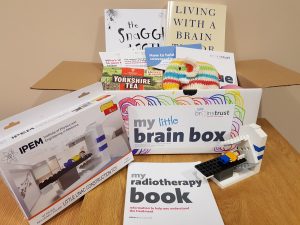World Kindness Day
Today we celebrate World Kindness Day. Here at brainstrust, we’re extremely lucky and incredibly grateful for the kindness we receive each and every day. But today, we’d like to highlight a business whose kindness will soon land on the doorsteps of hundreds of families all over the UK.
Jack N’ Jill
Last month, we were approached by ‘Jack N’ Jill’, an Australian company conquering the children’s market with its natural personal care range. Established 70 years ago, their range of children’s products can now be found in more than 39 countries around the world. With such a remarkable portfolio, we’re thrilled to announce that their products will now be included in every little brain box, following the company’s kind offer of support.
Jack N’ Jill is fast becoming the go-to for many households searching for safe and natural bathtime products. Their generous donation includes their cruelty free and vegan bubble bath and moisturiser, the perfect recipe for a relaxing soak. Kind to the skin and the environment, all Jack N’ Jill products are made using only organic and natural ingredients. The range they have kindly donated is free from parabens, sulfates, palm oil, synthetic fragrances and colour. Suitable from birth onwards, everything is dermatologically formulated, hypoallergenic and utilises aromatherapy to physically and mentally soothe. A relaxing bath is something many of us take for granted, but for brain tumour patients, a peaceful soak means so much more, and can often make the world of difference.
The brainstrust Brain Box
As mentioned above, the Jack N’ Jill moisturiser and bubble bath will now be included within our little brain box – a free of charge, essential toolkit specifically designed to support children and their carers following a brain tumour diagnosis. As a personalised service, each box is filled with child-friendly resources covering topics such as radiotherapy, proton beam therapy, fatigue and how to have  a difficult conversation.
a difficult conversation.
We appreciate how difficult things can be once a little person you love is diagnosed with a brain tumour; the ‘4am moments’, the travelling to and from appointments, the stream of questions that pop into your head, trying to remember the jobs of all the people that you’ll meet on your journey, and knowing who to turn to and when. We know that this is a juggling act you simply don’t need when you just want to focus your energy on making them feel better. This is why we created the brain box to help you keep on top of things.
Because we’re passionate about well-being, we love to include special treats in every brain box. The kindness and generosity we receive from businesses like Jack N’ Jill allows us to do this. In and amongst the devastation that a brain tumour diagnosis brings, these little touches create smiles, and prompt the need to focus on well-being.
Inspired by Jack N’ Jill? If you’re able to donate products to include in our brain box, we would love to hear from you. Please email our Community Fundraiser, Sophie – sophie@brainstrust.org.uk.
To find out more about little brainstrust, click here.
To request a brain box, click here.






